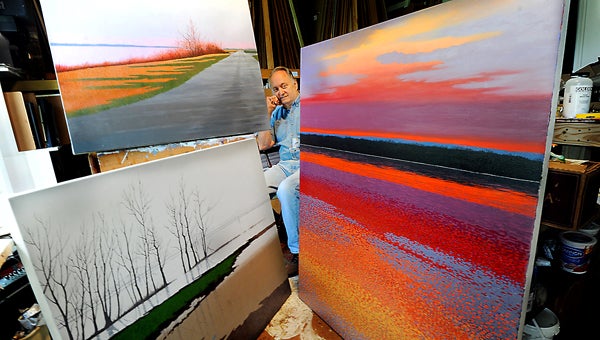Eighteenth century era coming into focus
Published 12:25 am Friday, July 29, 2016
How easy is it to catch a glimpse of what Natchez life was like 300 years ago?
Until this year, understanding what the first settlements of the area looked like was generally left to the imagination.
Residents driving up and down Canal Street may have known the origins of the city once existed on the small strip of land between them and the Mississippi River Bluff.
But old abandoned houses sitting at the top of concrete steps and a log cabin at the intersection of D.A. Biglane Street were the prevailing images residents and tourists had of the Natchez National Historical Park property.
The houses are now gone. The log cabin is the last vestige of a 1940s vision of Fort Rosalie that was a far cry from the real fort built 300 years ago.
In just a matter of months, views of 18th century Natchez are now coming into focus.
Like peeling back the layers of an onion, the Natchez National Historical Park has been methodically removing trees and clearing the property to reveal what has been hidden in the forest and thickets along the bluff.
As Natchez’s 300th birthday approaches, passersby now have a clearer view of a hill rising up to the bluff near Green Street. The embankment was once one of the sides of the 1730 fort that was built by the French using African slaves. The fort replaced the original 1716 wooden palisade destroyed by the Natchez Indians in an uprising.
The slow unveiling of the embankment is just one hint of what the Natchez area looked like in the early 1700s.
Other glimpses — even smaller bits of life in and around Fort Rosalie — can now be seen in the Natchez Visitor Reception Center.
Sitting in the middle of visitor center lobby is an electronic exhibit of artifacts unearthed from the old fort site just a few blocks away.
The virtual electronic exhibits shows high resolution images of pieces of smoking pipes, bits of pottery, buttons, gun ammunitions and other small items discovered by archaeologists on the Fort Rosalie site.
The images in full color look almost as if you could pick each object up and place them in your hands for inspection. Unlike still photographs, the images and video provide a 360-degree views of the artifacts that offer a link to the past.
Additional videos from Natchez National Historical Park Superintendent Kathleen Bond and archaeologists who led the excavations at the Fort Rosalie site give context to the objects discovered at the site.
The exhibit will be in the visitor center Wednesday during the all-day celebration of Natchez’s 300th birthday. It will be on view for several days afterward.
For a city whose history and tourism seems fixated on the antebellum South and the 19th-century, the artifacts on display in the visitor center and the Fort Rosalie site that will be dedicated Wednesday, demonstrate that Natchez’s story is more than hoopskirts and jib windows.
They show that Natchez’s early history of the French and their relationship with the Natchez Indians is just another fascinating part of the Natchez story — a chapter that is unfolding 300 years later.
Ben Hillyer is the news editor of The Natchez Democrat. He can be reached at 601-445-3540 or by email at ben.hillyer@natchezdemocrat.com.


